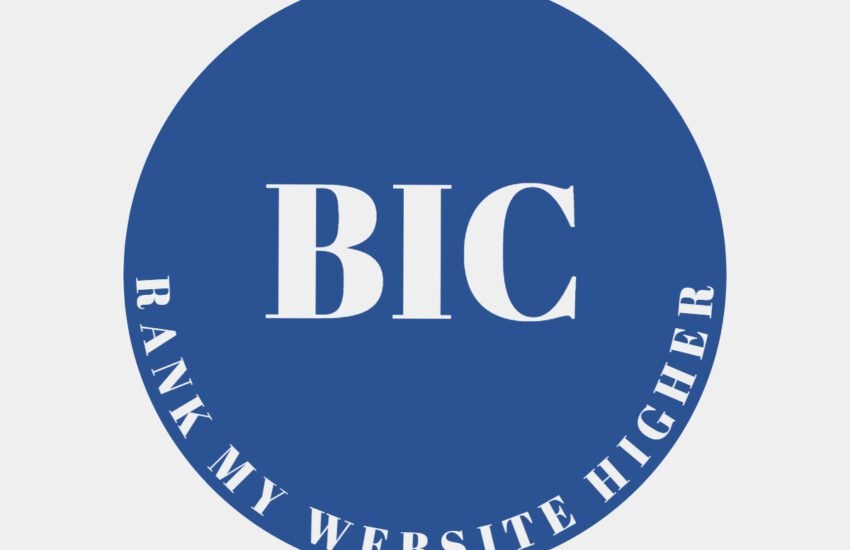Optimizing Search Snippets: SEO Title Tag and Meta Tag
In the ever-evolving landscape of digital marketing, search engine optimization (SEO) remains a crucial component for businesses looking to increase their online visibility and drive organic traffic to their websites.
While many aspects of SEO have undergone significant changes over the years, the importance of optimizing search snippets, specifically the SEO title tag and meta tag, remains as relevant as ever.
- What are Search Snippets?
- The Importance of Optimizing Search Snippets
- Best Practices for Optimizing SEO Title Tags
- Best Practices for Optimizing Meta Tags
- Tools and Resources for Optimization
- Conclusion
- Frequently Asked Questions
- 1. What are SEO title tags and meta tags, and why are they important for search engine optimization (SEO)?
- 2. How do SEO title tags impact search engine rankings and user engagement?
- 3. What are the best practices for optimizing SEO title tags?
- 4. How do meta tags, such as meta descriptions, contribute to SEO and user engagement?
- 5. What are the key elements of an optimized meta description?
- 6. How can website owners conduct keyword research to optimize SEO title tags and meta tags?
- 7. How can structured data markup enhance search snippets and improve SEO visibility?
- 8. How does A/B testing help optimize SEO title tags and meta tags?
- 9. How can website owners monitor and measure the effectiveness of their SEO title tags and meta tags?
- 10. How can website owners stay updated on best practices and changes in search engine algorithms related to optimizing search snippets?
- 11. How does the length of SEO title tags and meta descriptions impact their effectiveness?
- 12. What role does branding play in optimizing SEO title tags and meta tags?
- 13. How can website owners optimize SEO title tags and meta tags for local SEO?
- 14. How can website owners optimize SEO title tags and meta tags for mobile search?
- 15. How can website owners leverage user intent to optimize SEO title tags and meta tags effectively?
What are Search Snippets?
Search snippets, also known as meta tags or meta descriptions, are the brief summaries that appear on search engine results pages (SERPs) below the clickable titles.
These snippets provide users with a preview of what they can expect to find on a particular webpage, making them a critical factor in attracting clicks and driving traffic.
Optimizing search snippets involves crafting compelling and relevant titles and descriptions that not only accurately represent the content of the webpage but also entice users to click through to learn more.
In this article, we’ll explore the importance of optimizing SEO title tags and meta tags, along with some best practices for achieving maximum effectiveness.
The Importance of Optimizing Search Snippets
1. Enhanced Visibility
Well-optimized search snippets can significantly improve a website’s visibility on SERPs. A compelling title and meta description can make a webpage stand out among competitors, increasing the likelihood of users clicking through to the site.
2. Increased Click-Through Rates (CTR)
By crafting enticing and relevant snippets, businesses can attract more clicks from users who are actively searching for information related to their products or services. A higher CTR can lead to increased traffic and potentially higher conversion rates.
3. Improved User Experience
Search snippets play a crucial role in providing users with a preview of what to expect when they click on a search result. By accurately reflecting the content of the webpage, optimized snippets can help users find the information they need more quickly and easily, leading to a positive user experience.
Best Practices for Optimizing SEO Title Tags
1. Include Target Keywords
Incorporate relevant keywords into the title tag to improve the page’s relevance to search queries. However, avoid keyword stuffing, as this can have a negative impact on both user experience and search engine rankings.
2. Keep it Concise
Limit the length of the title tag to around 50-60 characters to ensure that it displays properly on SERPs. A concise title that accurately summarizes the content of the page is more likely to attract clicks from users.
3. Create Compelling Titles
Craft titles that are both descriptive and compelling, enticing users to click through to learn more. Use action words, numbers, and compelling language to capture attention and spark curiosity.
4. Include Brand Name
If applicable, include the brand name at the end of the title tag to improve brand recognition and trust.
5. Optimize for Readability
Ensure that the title tag is easy to read and understand. Use proper grammar and punctuation to enhance clarity and readability.
Best Practices for Optimizing Meta Tags
1. Write Descriptive Summaries
The meta description should provide a concise summary of the content of the webpage. Use this space to highlight key information and benefits that users can expect to find on the page.
2. Utilize Keywords Naturally
Incorporate relevant keywords into the meta description in a natural and seamless manner. Avoid keyword stuffing, and focus on providing valuable information that aligns with user intent.
3. Maintain Relevance
Ensure that the meta description accurately reflects the content of the page. Misleading or irrelevant meta descriptions can lead to a poor user experience and may result in a higher bounce rate.
4. Encourage Action
Use persuasive language to encourage users to click through to the webpage. Include calls-to-action (CTAs) such as “Learn More,” “Shop Now,” or “Sign Up” to prompt user engagement.
5. Optimize Length
Aim for a meta description length of around 150-160 characters to ensure that it displays properly on SERPs. Keep the most important information near the beginning to capture users’ attention.
Tools and Resources for Optimization
1. Google Search Console
Monitor the performance of your search snippets, including click-through rates and impressions, using Google Search Console. This tool provides valuable insights into how your snippets are performing and allows you to make data-driven optimizations.
2. SEO Plugins
Utilize SEO plugins such as Yoast SEO or All in One SEO Pack to streamline the optimization process. These plugins offer helpful features and recommendations for improving your title tags and meta descriptions.
3. Keyword Research Tools
Conduct keyword research using tools like SEMrush, Ahrefs, or Google Keyword Planner to identify relevant keywords to target in your search snippets. Focus on long-tail keywords with moderate to high search volume and low competition.
4. A/B Testing
Experiment with different title tags and meta descriptions to determine which combinations yield the best results. A/B testing allows you to identify the most effective messaging and optimize your snippets for maximum impact.
Conclusion
Optimizing search snippets, including SEO title tags and meta tags, is essential for improving a website’s visibility, attracting clicks, and providing users with a positive experience.
By following best practices such as including target keywords, crafting compelling titles and descriptions, and monitoring performance metrics, businesses can enhance their presence on SERPs and drive organic traffic to their websites.
As search algorithms continue to evolve, staying informed and adapting to changes in search behavior is crucial for maintaining a competitive edge in the digital landscape.
Frequently Asked Questions
1. What are SEO title tags and meta tags, and why are they important for search engine optimization (SEO)?
SEO title tags and meta tags are HTML elements that provide information about a webpage’s content to search engines and users.
The SEO title tag specifies the title of a webpage, while meta tags, such as meta description and meta keywords, provide additional context. They are crucial for SEO because they influence how search engines display and rank webpages in search results, impacting click-through rates and organic traffic.
2. How do SEO title tags impact search engine rankings and user engagement?
SEO title tags play a significant role in search engine rankings and user engagement by:
– Communicating the relevance and topic of a webpage to search engines, influencing its ranking for specific keywords and search queries.
– Attracting users’ attention in search results with compelling, descriptive titles that accurately reflect the content and purpose of the webpage.
– Enhancing click-through rates (CTRs) by enticing users to click on the search snippet and visit the webpage, thereby increasing organic traffic and visibility.
3. What are the best practices for optimizing SEO title tags?
Best practices for optimizing SEO title tags include:
– Including target keywords near the beginning of the title tag to signal relevance to search engines and users.
– Keeping title tags concise (under 60 characters) to ensure they display fully in search results and capture users’ attention.
– Writing descriptive, compelling titles that accurately reflect the content and value proposition of the webpage.
– Avoiding keyword stuffing or over-optimization, which can negatively impact user experience and search engine rankings.
– Using modifiers, numbers, symbols, and calls-to-action strategically to enhance visibility and click-through rates in search results.
4. How do meta tags, such as meta descriptions, contribute to SEO and user engagement?
Meta tags, such as meta descriptions, contribute to SEO and user engagement by:
– Providing additional context and information about the webpage’s content, helping search engines understand its relevance to user queries.
– Influencing search engine rankings indirectly by improving click-through rates (CTR) and user engagement metrics, which are factors considered by search algorithms.
– Serving as a preview snippet in search results, giving users a concise summary of the webpage’s content and encouraging them to click through to learn more.
5. What are the key elements of an optimized meta description?
Key elements of an optimized meta description include:
– Writing compelling, descriptive copy that entices users to click on the search snippet and visit the webpage.
– Including relevant keywords naturally within the meta description to signal relevance to search engines and users.
– Keeping meta descriptions concise (under 160 characters) to ensure they display fully in search results and maintain user attention.
– Addressing the user’s query or intent directly, answering their questions or addressing their needs to provide value and relevance.
6. How can website owners conduct keyword research to optimize SEO title tags and meta tags?
Website owners can conduct keyword research to optimize SEO title tags and meta tags by:
– Using keyword research tools like Google Keyword Planner, SEMrush, Ahrefs, and Moz to identify relevant keywords and search terms related to their content and target audience.
– Analyzing competitor websites and search engine results pages (SERPs) to identify high-ranking keywords and topics in their niche.
– Prioritizing long-tail keywords and phrases with lower competition and higher intent to capture targeted traffic and improve conversion rates.
– Considering user intent and search context when selecting keywords, focusing on informational, navigational, or transactional queries relevant to their content.
7. How can structured data markup enhance search snippets and improve SEO visibility?
Structured data markup, such as schema.org markup, enhances search snippets and improves SEO visibility by:
– Providing additional context and metadata about the webpage’s content, enabling search engines to understand its structure, meaning, and relevance more accurately.
– Enabling rich snippets and enhanced search features in search results, such as review stars, product information, event details, and FAQ snippets, which can increase visibility, click-through rates, and user engagement.
– Enhancing the user experience by presenting relevant information directly in search results, reducing friction and encouraging users to click through to the webpage.
8. How does A/B testing help optimize SEO title tags and meta tags?
A/B testing (or split testing) helps optimize SEO title tags and meta tags by:
– Experimenting with different variations of title tags and meta descriptions to identify which combinations drive higher click-through rates (CTRs) and user engagement.
– Testing elements such as wording, length, formatting, and calls-to-action to determine which variations resonate most effectively with the target audience.
– Using A/B testing tools and platforms to measure and compare the performance of different variants in real-world conditions, allowing website owners to make data-driven decisions and refine their optimization strategies over time.
9. How can website owners monitor and measure the effectiveness of their SEO title tags and meta tags?
Website owners can monitor and measure the effectiveness of their SEO title tags and meta tags by:
– Tracking key performance indicators (KPIs) such as click-through rates (CTRs), organic traffic, and search engine rankings for targeted keywords and search queries.
– Utilizing web analytics tools like Google Analytics, Google Search Console, and third-party SEO software to analyze user behavior, engagement metrics, and conversion rates associated with organic search traffic.
– Conducting regular audits and reviews of search snippets and SERP performance to identify trends, opportunities, and areas for improvement in SEO title tags and meta tags.
– Experimenting with different optimization strategies and monitoring their impact on search visibility, user engagement, and overall SEO performance over time.
10. How can website owners stay updated on best practices and changes in search engine algorithms related to optimizing search snippets?
Website owners can stay updated on best practices and changes in search engine algorithms related to optimizing search snippets by:
– Following reputable SEO blogs, industry publications, and forums that provide insights, analysis, and updates on search engine optimization trends and developments.
– Participating in SEO communities, webinars, and conferences to network with peers, share experiences, and learn from experts in the field.
– Subscribing to newsletters and alerts from search engines, SEO software providers, and industry leaders to receive timely notifications about algorithm updates, new features, and best practices.
– Engaging with Google’s official documentation, announcements, and guidelines for webmasters and developers, which offer valuable insights and recommendations for optimizing search snippets and improving SEO visibility.
– Continuously experimenting, testing, and iterating on SEO strategies and tactics to adapt to evolving search algorithms, user behaviors, and industry trends.
11. How does the length of SEO title tags and meta descriptions impact their effectiveness?
The length of SEO title tags and meta descriptions impacts their effectiveness in search results.
Title tags should ideally be under 60 characters to ensure they display fully on search engine results pages (SERPs) and capture user attention.
Meta descriptions should be kept under 160 characters to prevent truncation in search snippets. Optimal length ensures that the entire title tag or meta description appears, conveying a clear and compelling message to users and improving click-through rates (CTR).
12. What role does branding play in optimizing SEO title tags and meta tags?
Branding plays a crucial role in optimizing SEO title tags and meta tags by:
– Incorporating brand elements, such as the brand name or slogan, into title tags and meta descriptions to enhance recognition and trust among users.
– Differentiating the website’s listings from competitors in search results by highlighting unique selling propositions, brand values, or benefits.
– Reinforcing brand identity and positioning by maintaining consistency in messaging, tone, and visual style across search snippets and other marketing channels.
– Leveraging brand authority and reputation to attract clicks, increase engagement, and drive conversions through compelling and recognizable search snippets.
13. How can website owners optimize SEO title tags and meta tags for local SEO?
Website owners can optimize SEO title tags and meta tags for local SEO by:
– Including location-specific keywords, such as city names, neighborhoods, or regions, in title tags and meta descriptions to target local search queries.
– Incorporating local business information, such as business name, address, phone number (NAP), and business category, in meta tags using schema markup to enhance visibility in local search results.
– Customizing title tags and meta descriptions to address local intent and preferences, such as mentioning nearby landmarks, attractions, or service areas relevant to the target audience.
– Encouraging user-generated content, such as local reviews, testimonials, or location-based content, to increase relevance and authority for local search queries.
14. How can website owners optimize SEO title tags and meta tags for mobile search?
Website owners can optimize SEO title tags and meta tags for mobile search by:
– Ensuring that title tags and meta descriptions are concise and mobile-friendly, as mobile search results have limited space for displaying text.
– Using schema markup to provide rich snippets and mobile-friendly features, such as click-to-call buttons, business hours, and ratings, in search results.
– Prioritizing mobile-responsive design and usability to enhance user experience and engagement on mobile devices, which can indirectly impact search rankings and click-through rates.
– Testing and optimizing search snippets for different screen sizes, resolutions, and mobile browsers to ensure consistency and readability across devices.
15. How can website owners leverage user intent to optimize SEO title tags and meta tags effectively?
Website owners can leverage user intent to optimize SEO title tags and meta tags effectively by:
– Conducting keyword research to identify user intent and search query intent, such as informational, navigational, or transactional intent, behind targeted keywords.
– Crafting title tags and meta descriptions that align with user intent and address the specific needs, questions, or goals of searchers.
– Using action-oriented language, relevant keywords, and persuasive messaging to match search intent and encourage clicks and conversions.
– Analyzing search engine results pages (SERPs) and competitor listings to understand how top-ranking pages address user intent and tailor search snippets accordingly.
– Monitoring user engagement metrics, such as bounce rates, time on page, and conversion rates, to evaluate the effectiveness of optimized search snippets in satisfying user intent and driving desired outcomes.


